Introduction
A Quick Peek into the World of AI
Deep Learning vs Machine Learning are two terms that usually capture the most attention in AI. Artificial Intelligence knows a little about many subjects—for example, chess and diagnosis—like that brilliant friend of yours. Even though people use these terms together, they have very different meanings.
Why Everyone’s Talking About Deep Learning vs Machine Learning
Many companies and developers are now making the choice between Deep Learning vs Machine Learning. It’s not limited to companies, either. If you’re starting out in tech, this is your important decision. I’ll try to explain this so there’s no confusing jargon.
Understanding the Basics

What is Machine Learning?
You can think of Machine Learning (ML) as your trying to train a dog to obey a command with data—you give it the commands; they experiment and finally choose what is best. ML empowers computers to pick up learning points from what they have experienced. With examples, you teach it and it understands the patterns. Deep Learning vs Machine Learning are two terms that usually capture the most attention in AI.
Real-World Examples of Machine Learning
- Blocking unsolicited and unsure emails
- Suggestions for items on Amazon
- Credit scoring models are used in the industry.
What is Deep Learning?
Now, Deep Learning represents the next and fastest phase of ML. Like the processes in our brain, it uses artificial neural networks. Because ML learns only the essentials, DL explores many layers—which is where its title comes from. It knows how to sort through vast collected data and locate patterns even humans don’t see. Deep Learning vs Machine Learning are two terms that usually capture the most attention in AI.
Real-World Examples of Deep Learning
- Tesla’s autopilot can see pedestrians and recognize different kinds of road signs.
- If you tell Siri or Alexa “What’s the weather in Paris like today?”
- Netflix appears to know you as well as your friend closest to you.
Key Differences Between Deep Learning and Machine Learning
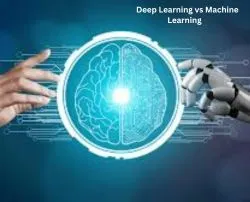
In order to settle the Deep Learning vs Machine Learning issue, we’ll use the example of comparing apples and oranges in a slightly nerdy manner.
1. Data Dependency
The method works well when data sets are smaller to moderate in size. Unlike, Deep Learning vs Machine Learning relies on vast amounts of data to do well.
2. Hardware Requirements
You can run ML using regular CPUs. DL? GPU or TPU horsepower is its favorite option. High-end things are what DL dreams about.
3. Feature Engineering
Most of the time, ML requires choosing which features will be used. You decide what’s important to you. DL? A neural network learns itself, much like a detective who doesn’t rely on clues.
4. Execution Time
It can take hours and sometimes even days, to train a DL model. In most cases, training ML models happens much quicker.
5. Model Complexity
Decision trees and linear regression are fairly easy to understand.
Because they are made up of several layers, DL models are both complex and tricky to understand. Unlike, Deep Learning vs Machine Learning relies on vast amounts of data to do well.
6. Accuracy and Performance
With image recognition or NLP, Deep Learning often beats ML in how well it works. It’s similar to going from a smartphone camera to one that is more like a DSLR. Unlike, Deep Learning vs Machine Learning relies on vast amounts of data to do well.
7. Transparency & Interpretability
You can explain and understand the findings of ML models better than those of classical machine learning algorithms. DL models? You can see what they do, but it’s not easy to find out how it’s done.
Use Cases and Applications
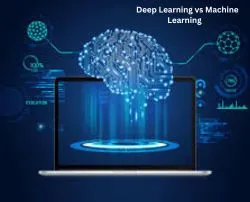
Machine Learning in Action
Industries:
- Healthcare: Guessing the success of treating a patient.
- Marketing: Trying to work out who will leave.
- Finance: Stock trends are examined by making financial forecasts.
Deep Learning in Action
Autonomous Vehicles, Facial Recognition, NLP
- Tesla’s self-driving technology.
- Giving you the ability to tag your friends on posts.
- ChatGPT is having this conversation with you in real time.
Which One Should You Learn First?
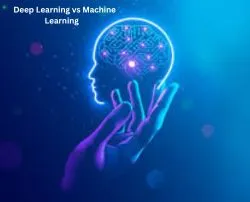
Your Background Matters
You don’t have experience coding yet? Begin your learning by studying machine learning first. It’s simpler to understand and it speeds up making actual things. Unlike, Deep Learning vs Machine Learning relies on vast amounts of data to do well.
The Learning Curve Compared
Being taught ML is similar to how anyone begins by learning with recipes while cooking. Learning Data Literacy is compared to being a chef—it gives you more creative control, but there’s much more to master. Unlike, Deep Learning vs Machine Learning relies on vast amounts of data to do well.
Tools and Libraries Used
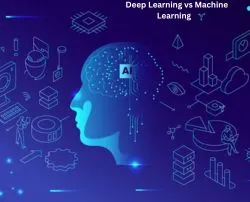
Popular Tools for Machine Learning
- Scikit-learn – It is easy to use for anyone learning data analysis.
- XGBoost – It is best known for helping in competitions.
- LightGBM – This model is Fast and efficient.
Popular Tools for Deep Learning
- TensorFlow – Google’s heavyweight framework.
- PyTorch – It has become popular with researchers.
- Keras – It is easy to use and is designed for people just starting with deep learning.
How They Work Under the Hood
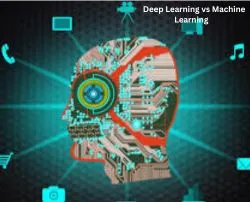
Machine Learning Algorithms Simplified
- Linear Regression: Predict continuous or numerical, data as your result.
- Decision Trees: Dependence on “if-then” logic.
- Random Forests: It allows us to join multiple decision trees.
- Support Vector Machines: It seeks the best way to separate data points.
You design it; it tells you what you want to know.
Deep Learning Neural Networks Simplified
Deep learning networks are built to look like a network of neurons.
- Input Layer: This is a part of the process where data comes in.
- Hidden Layers: Crunch neural networks, find the important trends in the data.
- Output Layer: Result is generated here.
Each of these networks improves its performance over time from the input data added. Unlike, Deep Learning vs Machine Learning relies on vast amounts of data to do well.
Conclusion
What’s the difference between Deep Learning vs Machine Learning? They are linked, but they aren’t the same. Machines rely on ML and DL is layered on top of it. One might say they are equally impressive and each is best used in certain ways. No matter if you’re a beginner or a tech person, it’s helpful to know the differences between either Operating System in any circumstance.
FAQs
It’s true that deep learning belongs to machine learning and involves dealing with huge data sets using neural networks.
Nope. Being a type of machine learning, deep learning is included in computer science. It has to exist as part of it—just as one chapter belongs to a book.
Getting started with machine learning is simpler than deep learning. In order to do deep learning better, you need more computer tools and a good grasp of math and coding.
Absolutely. A lot of computer vision, NLP, autonomous vehicles and AI research jobs list deep learning as something essential.
This issue isn’t going to disappear any time soon. Though everyone is talking about deep learning, ordinary ML is still preferred for working with simple data and basic problems.






